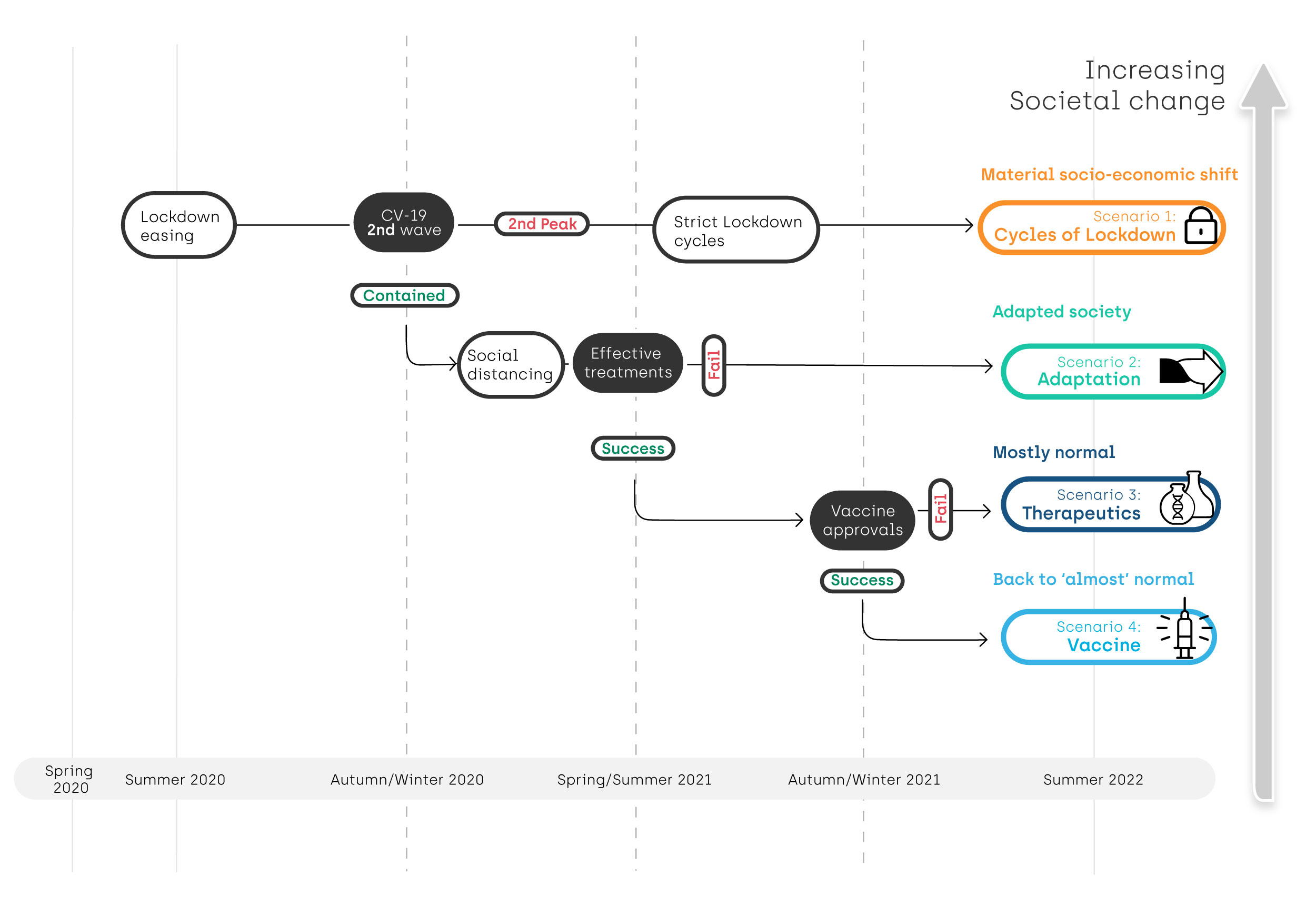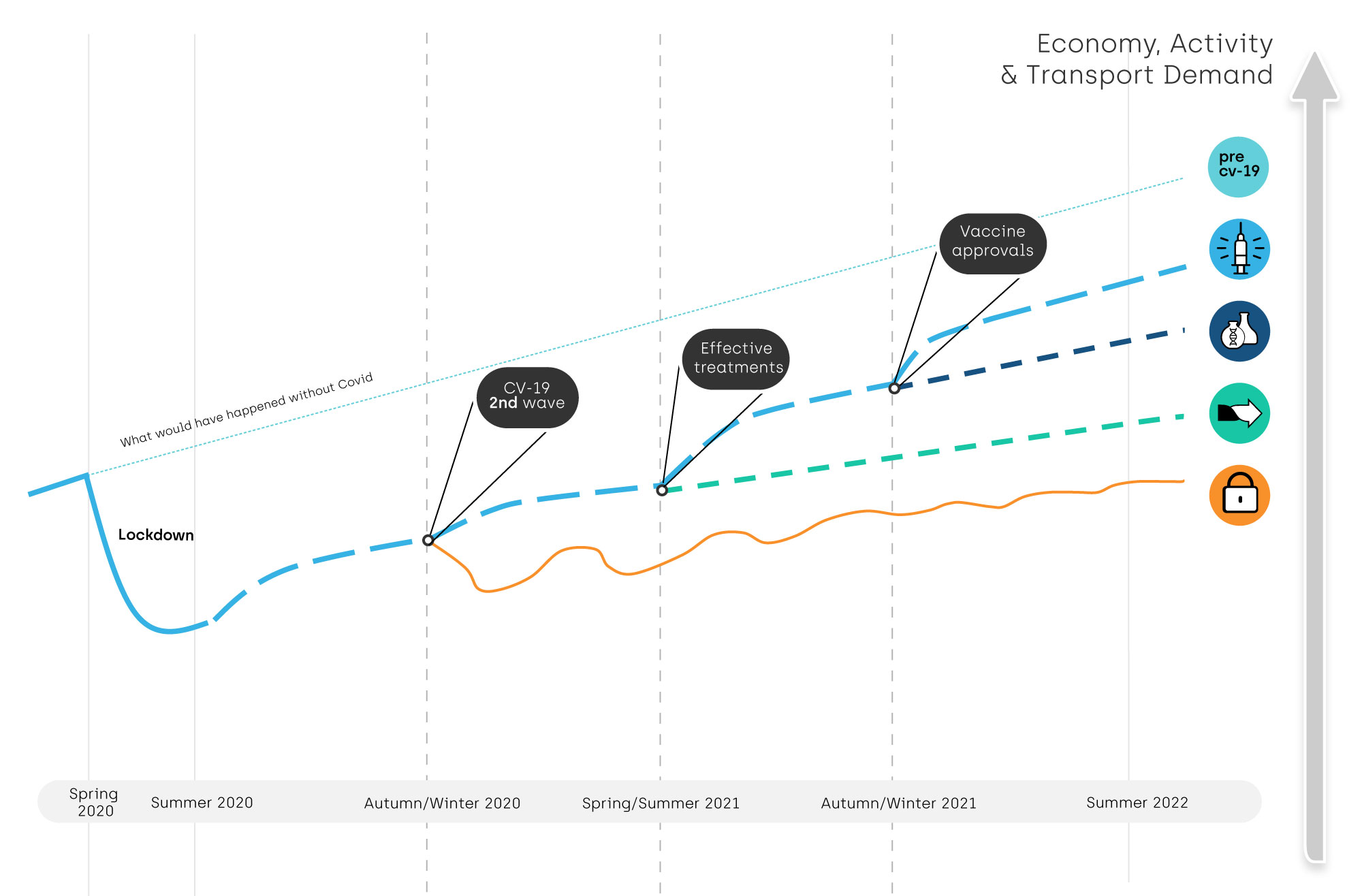Across the world, COVID-19 has led to unprecedented impacts on the way we travel. As some governments start to ease lockdowns and the focus turns from the immediate crisis to recovery, what will transport look like in a post-COVID-19 world? Will any of our societal responses to COVID-19 and lockdown stay with us in a ‘new normal’, or will they fade away?
In our view, the form and timing of any medical resolution of the COVID-19 crisis is the first order uncertainty. This will drive the direction of behavioural and policy responses and what this means to the economy, people’s activity and transport demand. Based on this, we have identified three key uncertainties:
- whether or not there is a second wave
- whether or not effective treatment pathways are found
- whether or not a successful vaccine is developed and widely deployed

Timeline illustrating the pathways to our scenarios based upon the outcomes of three key potential events
Right now, forecasting a single definitive outcome is fraught with problems. Thinking about medical uncertainties leads to four scenarios:
- Scenario 1 | Cycles of lockdown: Social distancing and ‘track-and-trace’ fail to stop a second wave of COVID-19. Further lockdowns are necessary over the next 2-3 years with the consequent negative effects on society.
- Scenario 2 | Adaptation: No second wave materialises, and society adapts, finding a new equilibrium of behaviours and activities that keep COVID-19 under control.
- Scenario 3 | Therapeutics: By 2021 an effective clinical pathway is found that significantly reduces health impacts and the mortality rate. Society returns mostly to normal.
- Scenario 4 | Vaccine: An effective vaccine is widely deployed in 2022. Society rapidly returns to pre-COVID-19 norms.
Other variants are possible. For instance, a world on the Cycles of Lockdown pathway could find a vaccine. However, we believe “Vaccine” (least impact) and “Cycles of Lockdown” (biggest impact) represent the upper and lower bounds of what we believe to be the plausible post-COVID-19 outcomes for economy, activity and transport demand.

Schematic showing the plausible outcomes for economy, activity and transport demand post-COVID-19
Understanding this range of outcomes allows governments, planners, transport operators and investors to explore the policy, strategy, investment and operational choices facing all types of infrastructure and transport services.
This framework and our scenarios are the result of a virtual collaboration from 43 leading transport planners, economists, forecasters and behavioural scientists from across our global team in North America, South America, Europe and Asia. Using a formal Scenario Planning methodology, we considered 92 potential short and long-term drivers of change.
In subsequent articles, we will show how these various drivers interact within our four pathways to produce a range of outcomes for the bus, rail, highways and aviation sectors.

